Emily Weiner—born in 1981 in Brooklyn, New York, currently residing and working in Nashville, Tennessee—is making waves in the art world marked by impressive showings with KÖNIG GALERIE and Red Arrow Gallery. Over the years, Weiner has created an alphabet of symbols, creating a new language—visually and semiotically. From surreal curtains to sensual color gradients, eerie eyes to small-scale celestial bodies, exquisite ceramic frames to pareidolic horizons, and mysterious hands to art historical fragments. The American artist approaches the canon of art through a feminist and Jungian lens but also questions that canon from an art historiographical perspective. In search for archetypes in art, art history, and the collective unconscious, Weiner focuses on some of the most essential fundaments of art: the object, the image, and the viewing experience.
Julien Delagrange: Dear Emily, I’m delighted to have you on CAI. How have you been?
Emily Weiner: I’ve been doing well, thank you. Thank you so much for having me—I admire the work that you do.
JD: I appreciate you taking the time to speak with us. I want to begin with a question that typically comes at the end of these conversations—what have you been working on recently? Are there any exciting projects on the horizon?
EW: Yes, I’m working on a solo show opening June ’25 at Miles McEnery Gallery in Chelsea. It’s especially exciting for me, not only because the gallery is a dream space but because it’s my first solo exhibition in New York. Following that, I will be working toward an exhibition with KÖNIG Galerie in Germany for January 2026.
JD: Before we discuss the many motifs in your work that I find utterly relevant and engaging today, could you please walk us through your journey as an artist and your artistic development, in particular, until the moment it all started to click?
EW: Since graduating from college at Barnard in 2003, I have worked full-time in many facets of the New York art world: as a studio assistant, a writer, an administrator, a curator, and an adjunct professor. My own painting happened in the evenings and on weekends for about two decades. I finally quit my nine-to-five four years ago, after having a child and moving to Nashville, TN. It turns out that having more studio time made all the difference. I’m grateful for those years in different professional roles because they made me think about art in a multifaceted way and see my own identity as something mutable.
JD: You used to paint in a more painterly manner with looser and more visible brushwork before turning to more calculated, calm, and celestial brushwork and compositions. What initiated this shift in your technique, compositions, subjects, and visual language?
EW: Actually, when I try to render anything from a photograph or real-life source material, a looser, maybe more brushy, way of painting is my default style. I have not necessarily given up this style, but lately, most of my paintings have come from purely invented imagery—like surrealist landscapes with curtains or spirals. When subjects are invented, my technique is intuitively different. I think this is because without a detailed map of where to place each dab of paint, gradations of hue and value stand in for detail, which creates a smoother atmosphere overall. I go back to painting from source imagery on occasion, and I’m always open to technical detours if they can get me closer to the feeling and subject I’m trying to represent.
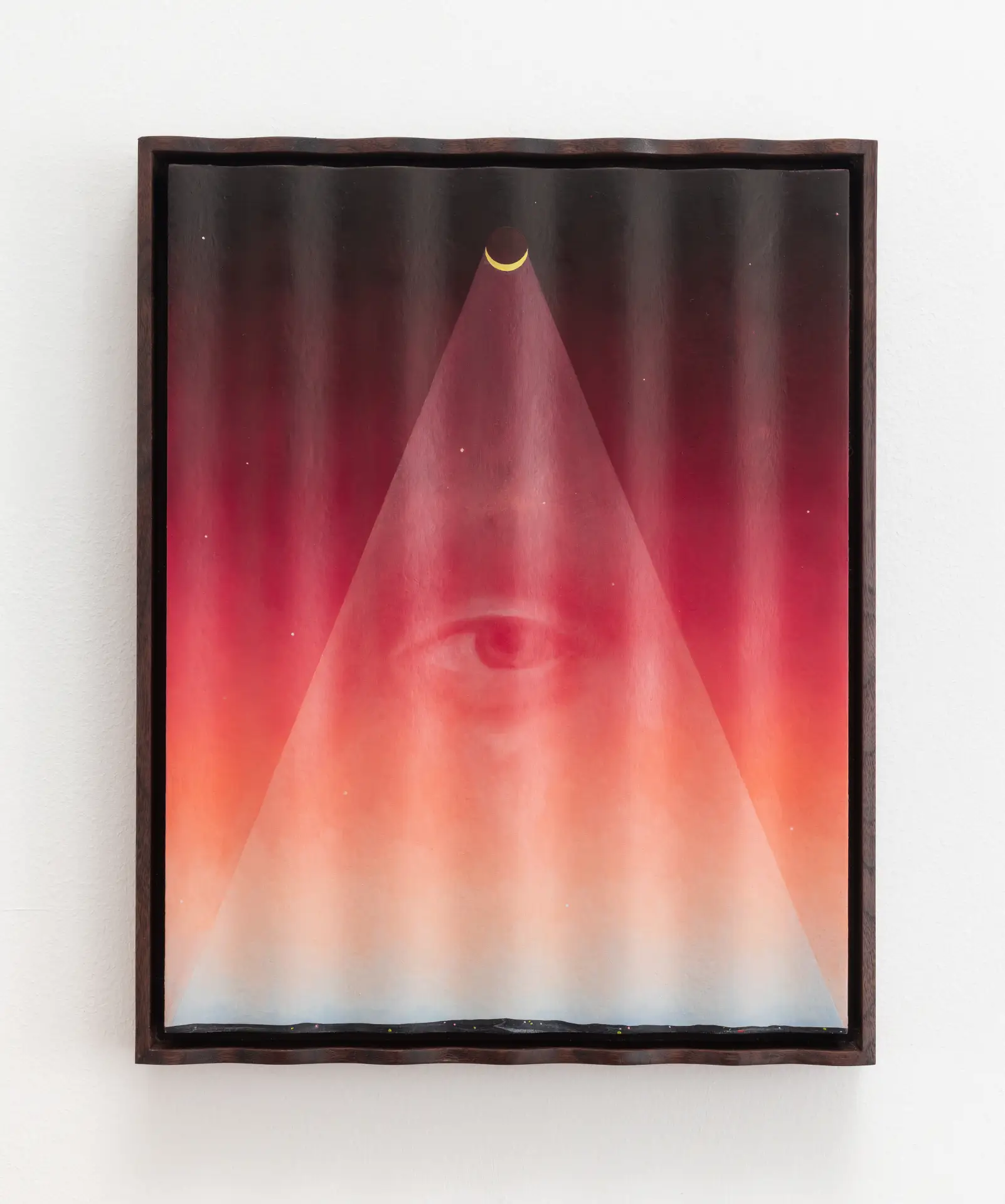
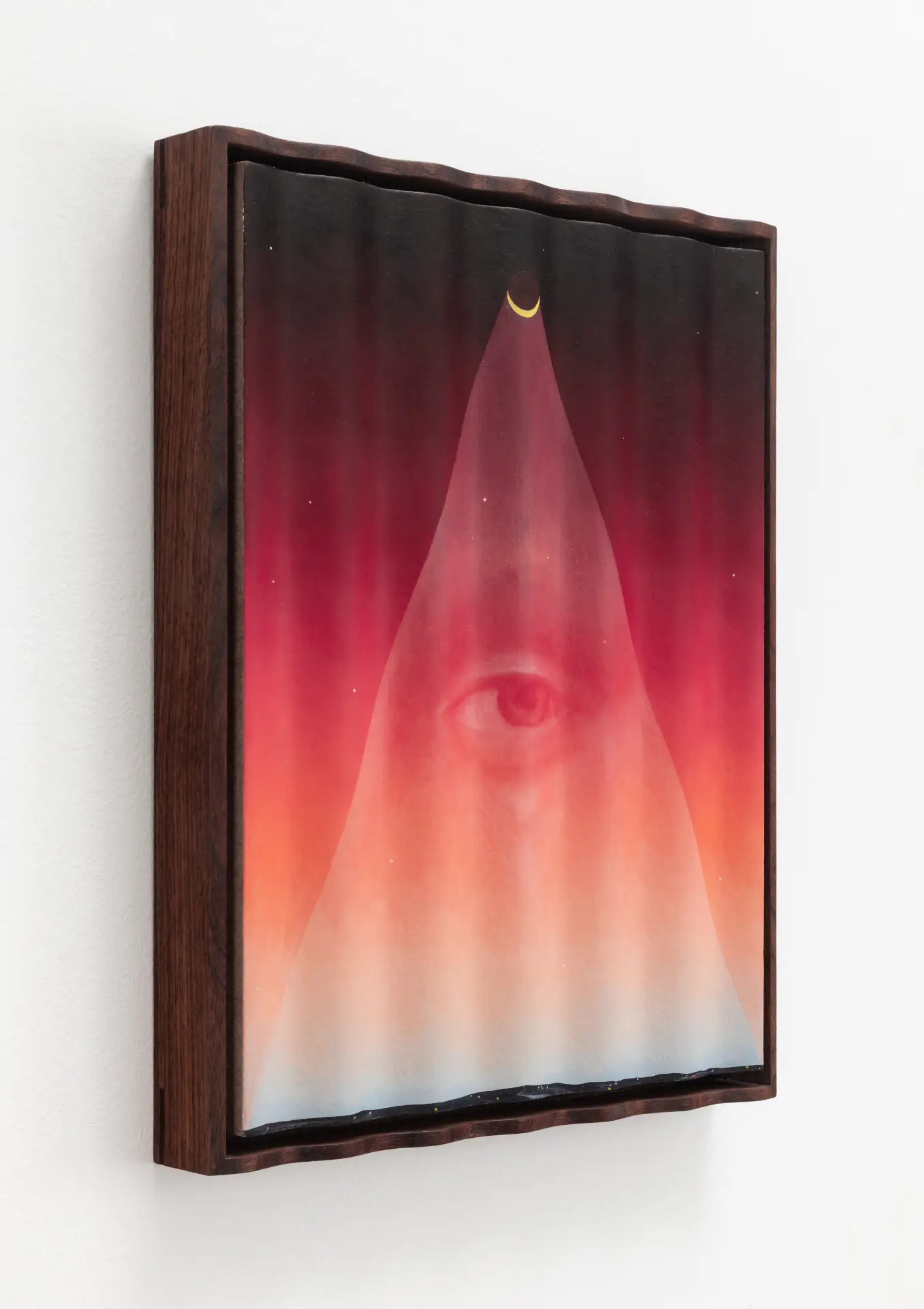
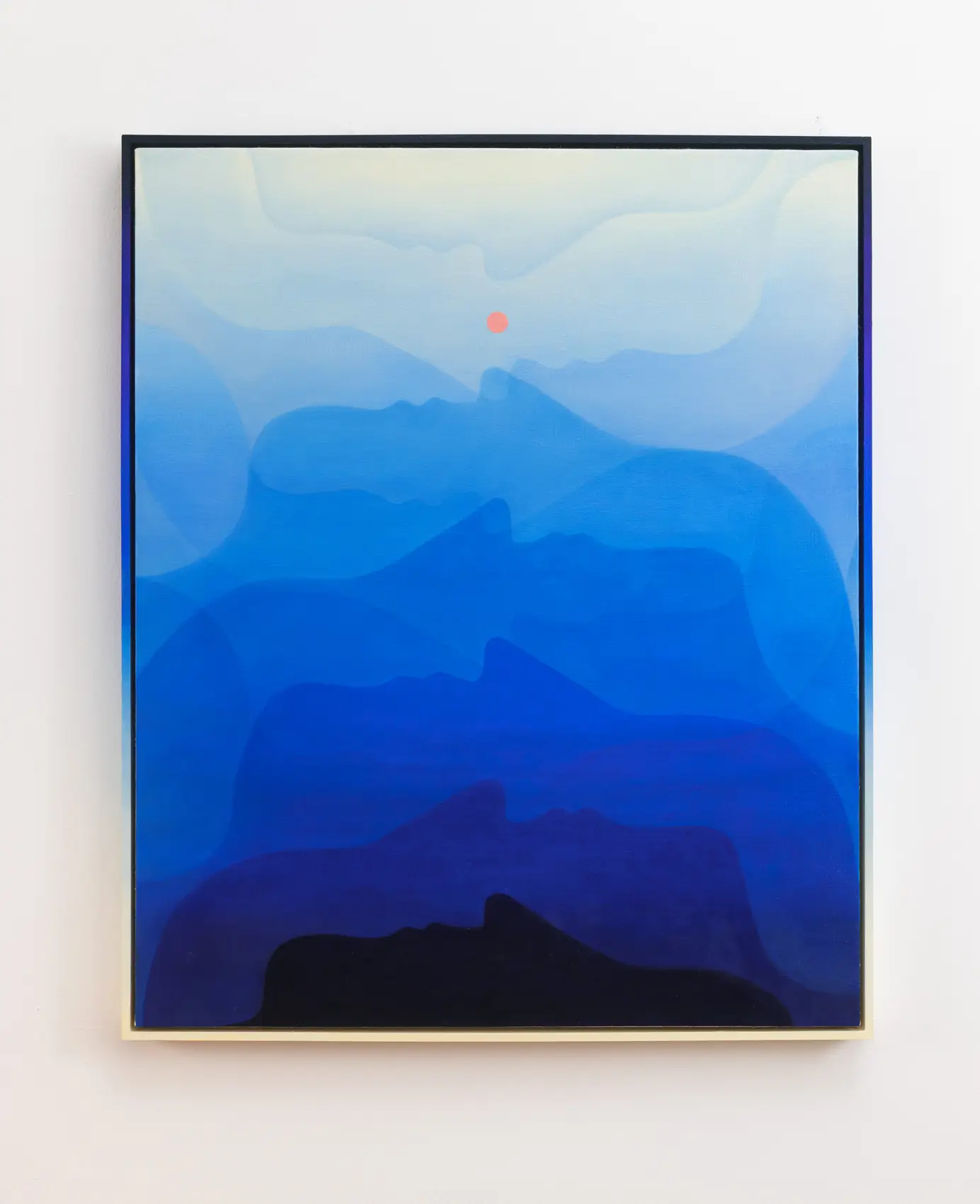
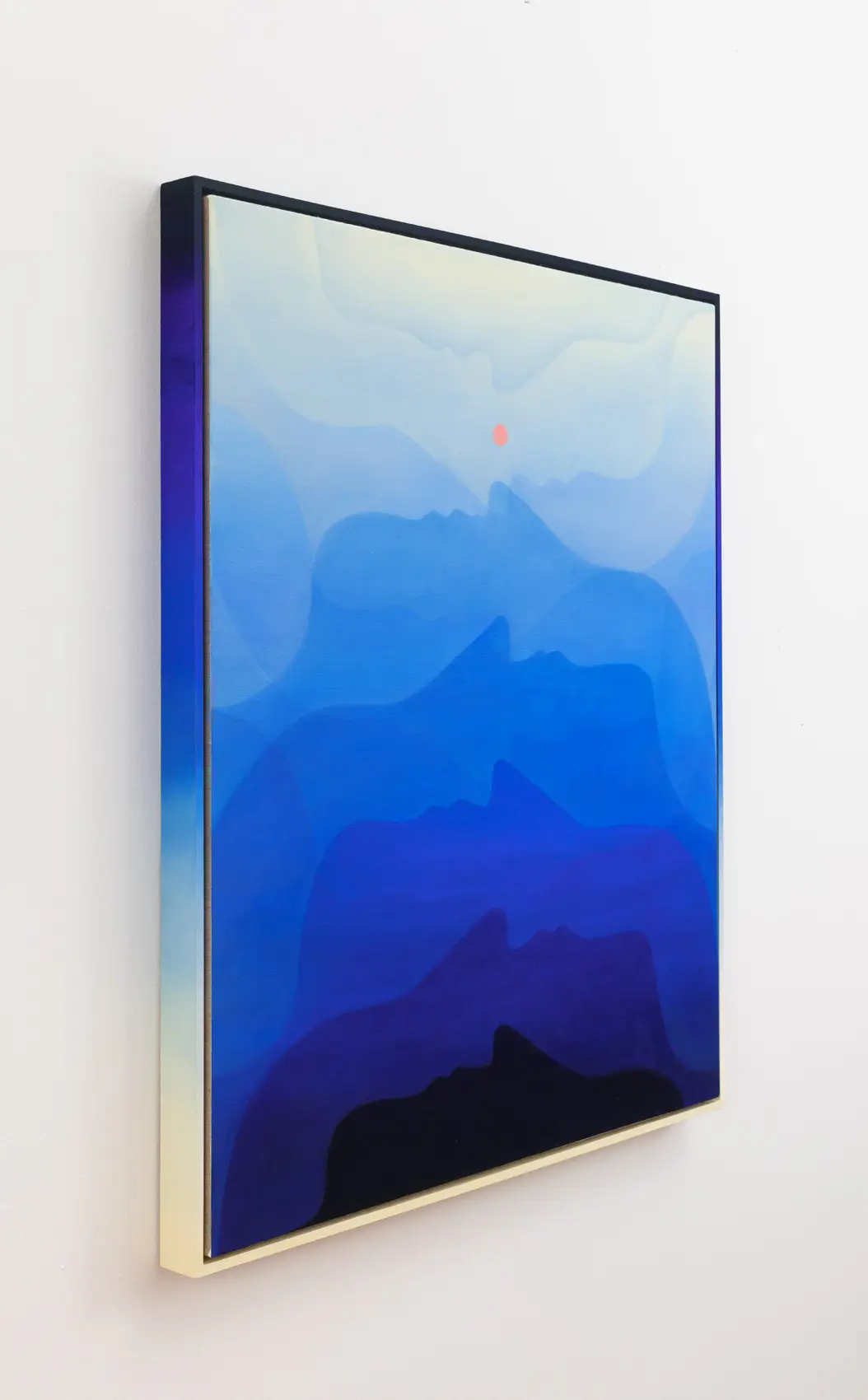
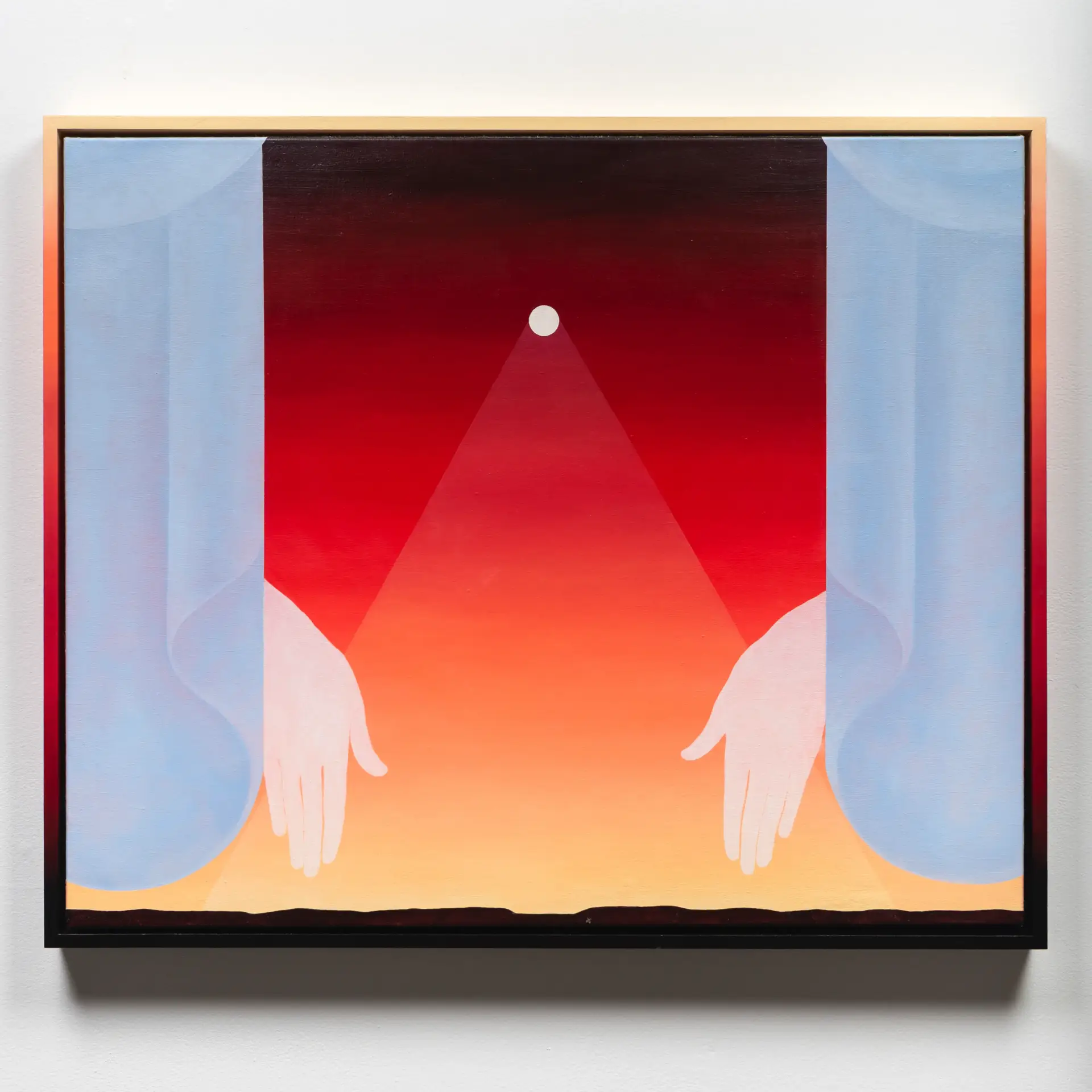
JD: Your paintings have a very strong sense of mysticism and ritual. A channeling of historical and spiritual narratives that seem to answer our longing for something supernatural in an era in which science and reason have demystified our world. Spirituality is perceived as inferior because of the absence of reason. It has no place in a secular and rational worldview—despite those irrational desires being an integral part and continuum of our existence. However, that sense of magic, mystery, and spirituality can be found in art without being renounced as quackery. From this perspective, what is your take on the role of art today? And, more specifically, what is the role or purpose of your art today?
EW: Thank you—yes, there is definitely a ritual that goes into making my paintings. It does not begin as a spiritual practice, but it does involve an element of faith. I show up in my space with paints and brushes and force myself to work on a canvas. I have to have confidence that the painting will come together and make sense eventually if I follow my intuition. Most of the time, I am not sure who is driving the conversation. Usually, it’s only after I finish a body of work that I can step away and get some clarity about what the paintings are saying. I don’t think the process is supernatural in an external sense of receiving messages from beyond, though. I actually think that when it comes to art or any really good idea, intuition is more intelligent than the logical brain. So, it’s a constant process of getting out of my own way. Recently, I realized that as soon as I notice myself thinking, “This painting is amazing,” it’s definitely not going to be amazing.
I don’t think contemporary science has demystified the world at all; I’d argue the opposite. Look at the first deep-field photographs from the James Webb telescope, taken only three years ago. Is there anything more sublime? Science has always been my main entry into a sense of the mysterious. It opens up big-picture questions about nature and the human condition. But because quantifiable data can’t answer the big questions alone, artists—like philosophers, spiritual teachers, and mystics—will always be important. I think artists take the immeasurable experience of being human and rephrase the questions as existential ones. Like Bruce Naumann said, “The true artist helps the world by revealing mystic truths.”
JD: Now that’s a quote to remember. In this context, can you briefly expand on using eyes, hands, moons, and suns within your work?
EW: I’m drawn to these archetypal symbols because they are paradoxically simplistic in form but profound for their mutability. They have multiple associations: The eye I’ve been painting is at once the enigmatic gaze of Mona Lisa and the all-seeing Eye of Providence on the dollar bill. Hands can symbolize the usually hidden forces behind the scenes or, conversely, the performer stealing the show. The moon symbolizes cycles and eternal return; the sun sometimes has to do with shining light on something.




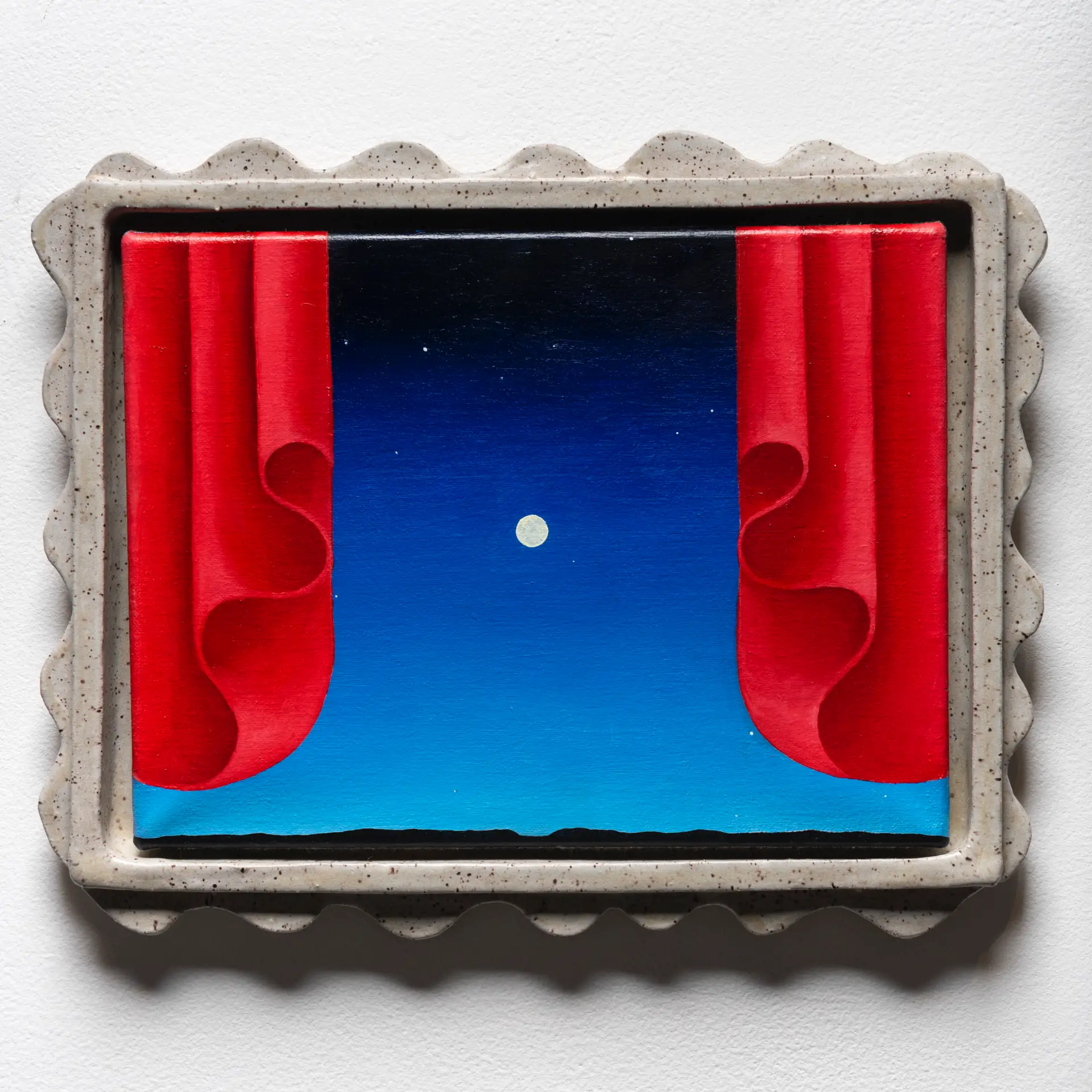
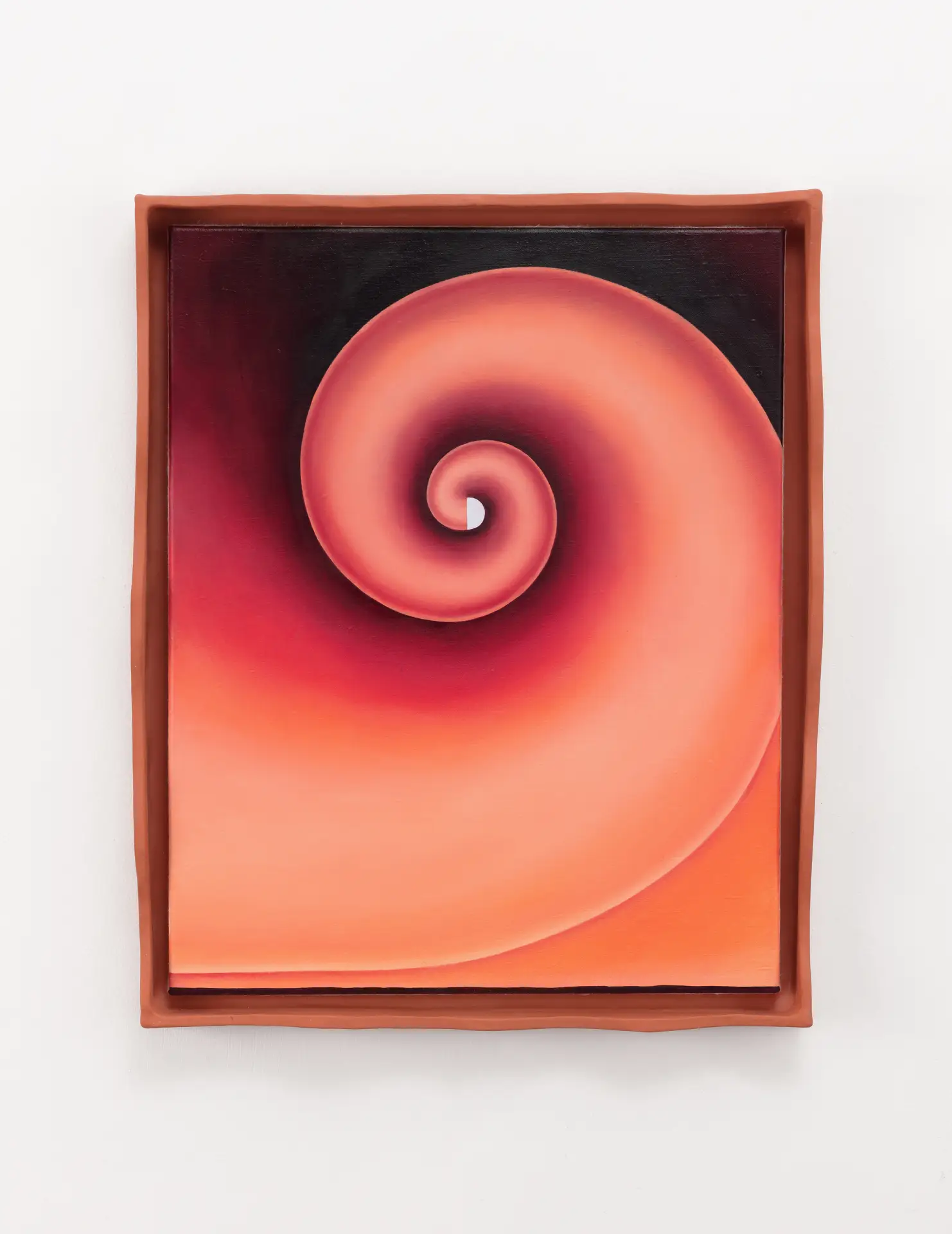
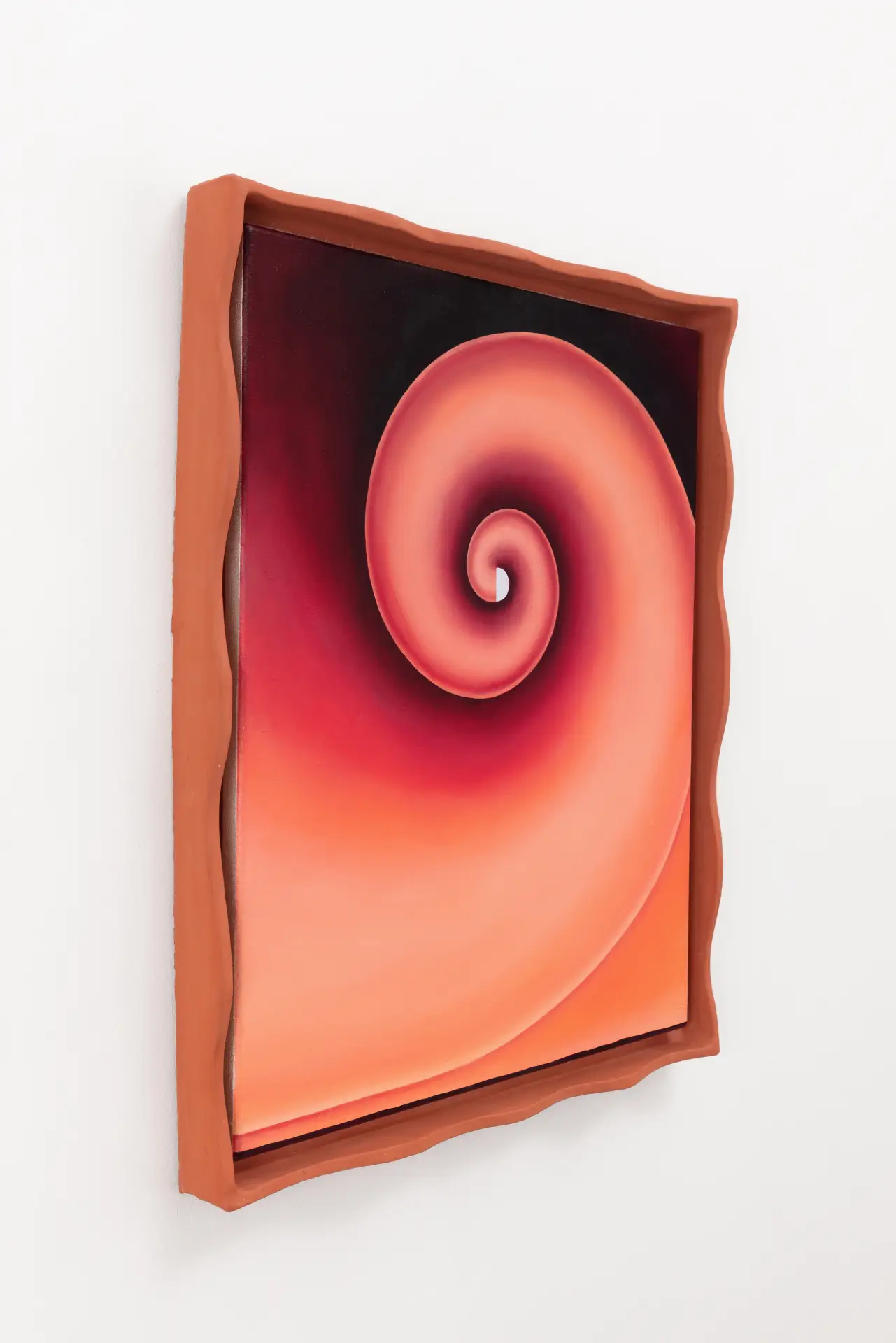
JD: It also seems as if you treat your artworks as relics, focusing not only on the painting as a picture but also on its objecthood in all its three-dimensionality. From wavey surfaces to terracotta and stoneware frames. How did this sculptural dimension enter your work, and why?
EW: The ceramics originated when I felt a need for a sculptural element in my paintings. The most recently shaped panels model some non-intuitive aspects of our physical surroundings, like space curvature (gravitational waves from binary stars) and wave-particle duality (interference patterns from the famous double-slit experiment that ushered in a new way of understanding reality through quantum theory). It’s been interesting to work on these panels and think about how artists have always tried to simulate extra dimensions in painting.
JD: Dimensionality also brings spatiality into the conversation. There seems to be an intriguing tension between the flatness of your smooth surfaces and absent brushwork, the actual depth of the frame or the wavey surfaces, the suggested depth of the gradients, and some of the selected motifs in the picture plane—for instance, the curtain, centripetal swirls, the atmospheric perspective of accumulating horizons, up to cracks reminiscent of Lucio Fontana’s (1899-1968) slashes and Spazialismo. Could you please elaborate on the notions of spatiality within your work?
EW: I’m sure that Lucio Fontana subconsciously had a significant influence on me. He was inspired by the scientific advancements of his time, including the first image of Earth from space, and his slash paintings were literal spatial breakthroughs. The execution is simple, but they have an aura. For a while, I have been painting curtains as a similar metaphor for what’s behind the veil of reality, as we understand it through our human senses and mythologies.
JD: Your work integrates symbolic imagery and historical references, from red-figure amphoras from Ancient Greece to the pathosformal of the hands of Leonardo Da Vinci’s (1452-1519) La Gioconda (1503-1506). What draws you to these elements, and with what intention do you implement them?
EW: Aby Warburg and his ideas, such as pathosformal and the afterlife of antiquity, were game-changing for me! I loved that Warburg was an outlier kind of art historian, making associations (that were sometimes weird) in a valiant attempt to come up with a unified theory for a very fragmented visual history. For the reasons I’m drawn to Warburg, I am even more inspired by Carl Jung—and his more mystical, primordially-oriented explanations of why some images have a specific power and durability throughout cultures and periods.
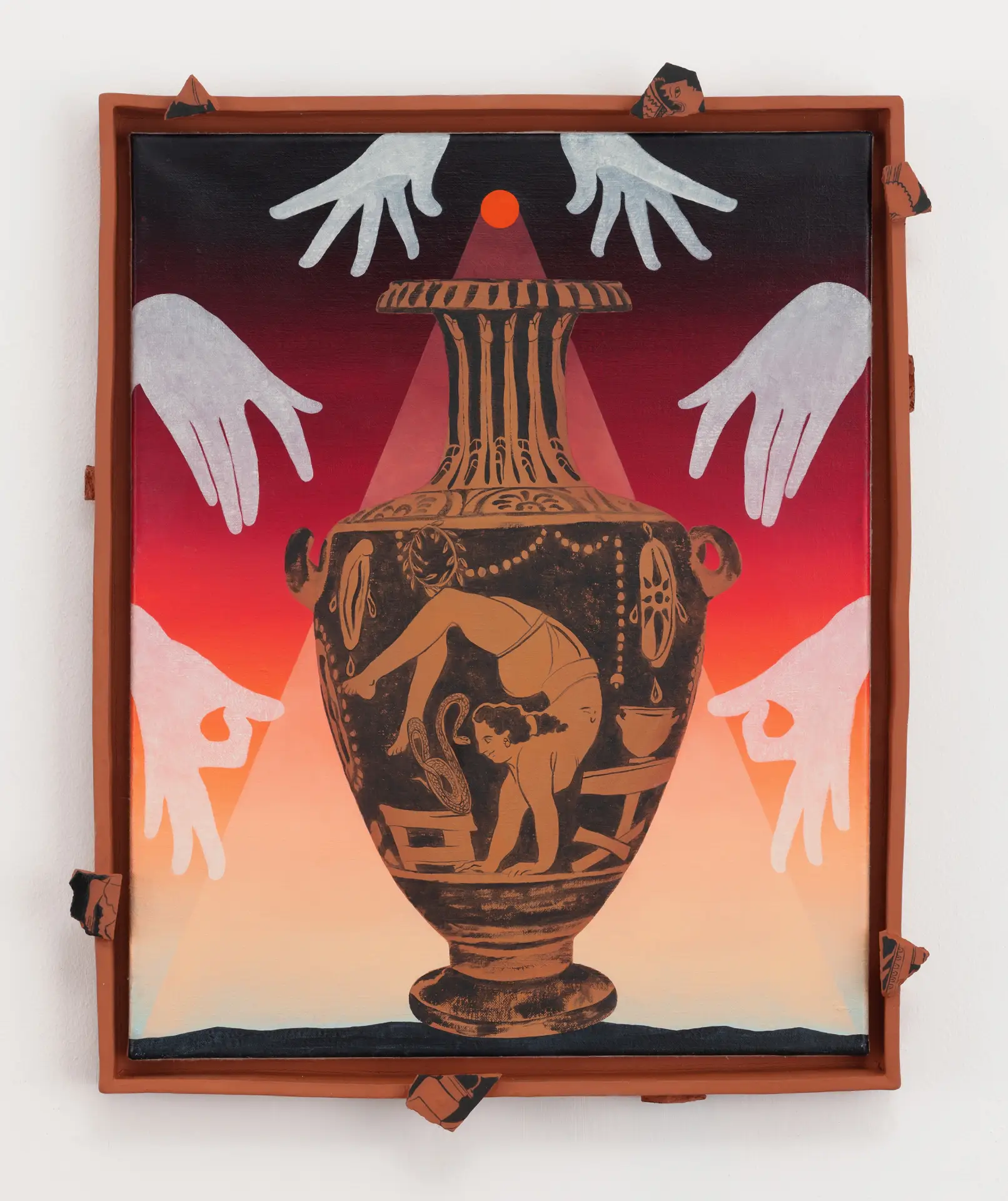
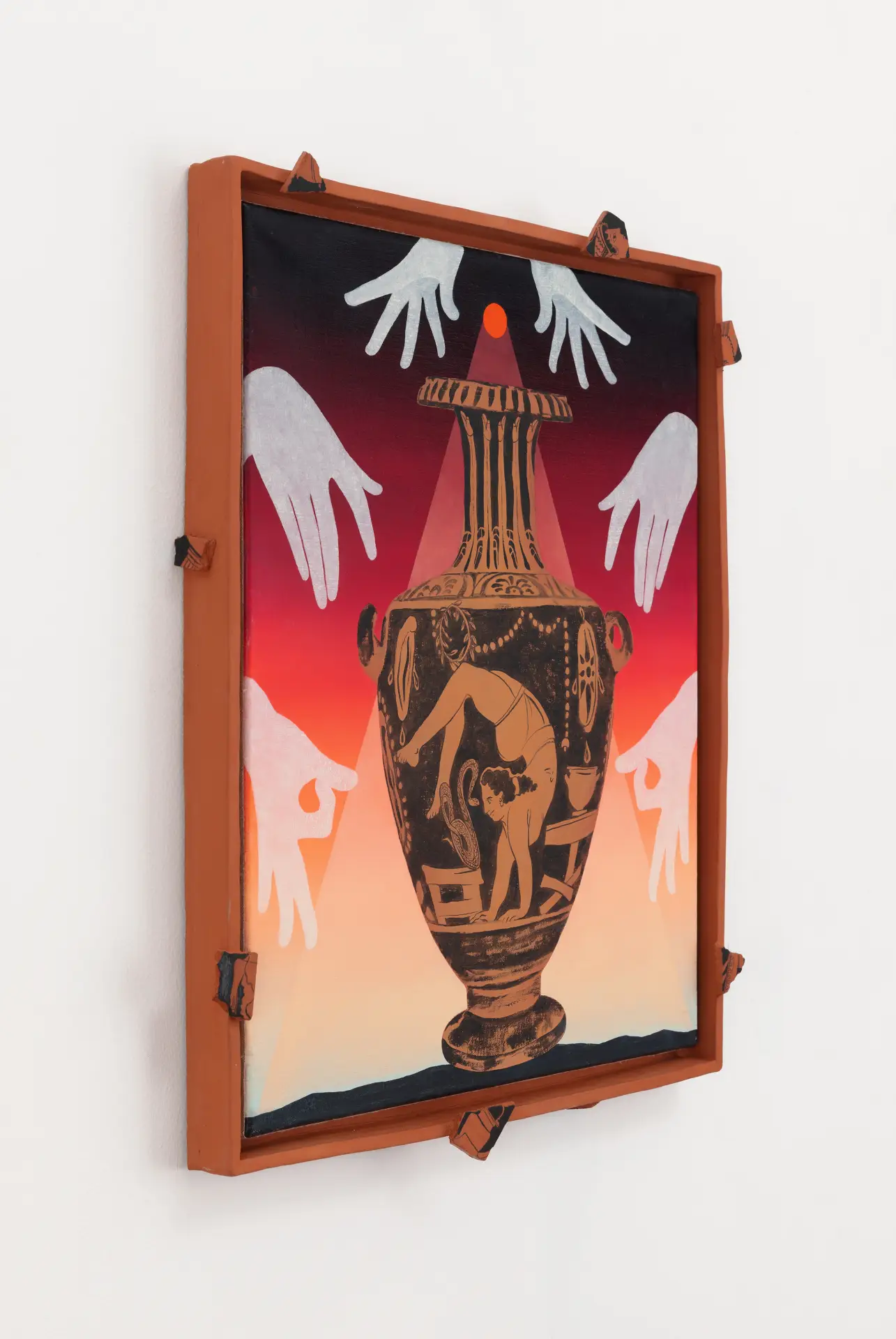
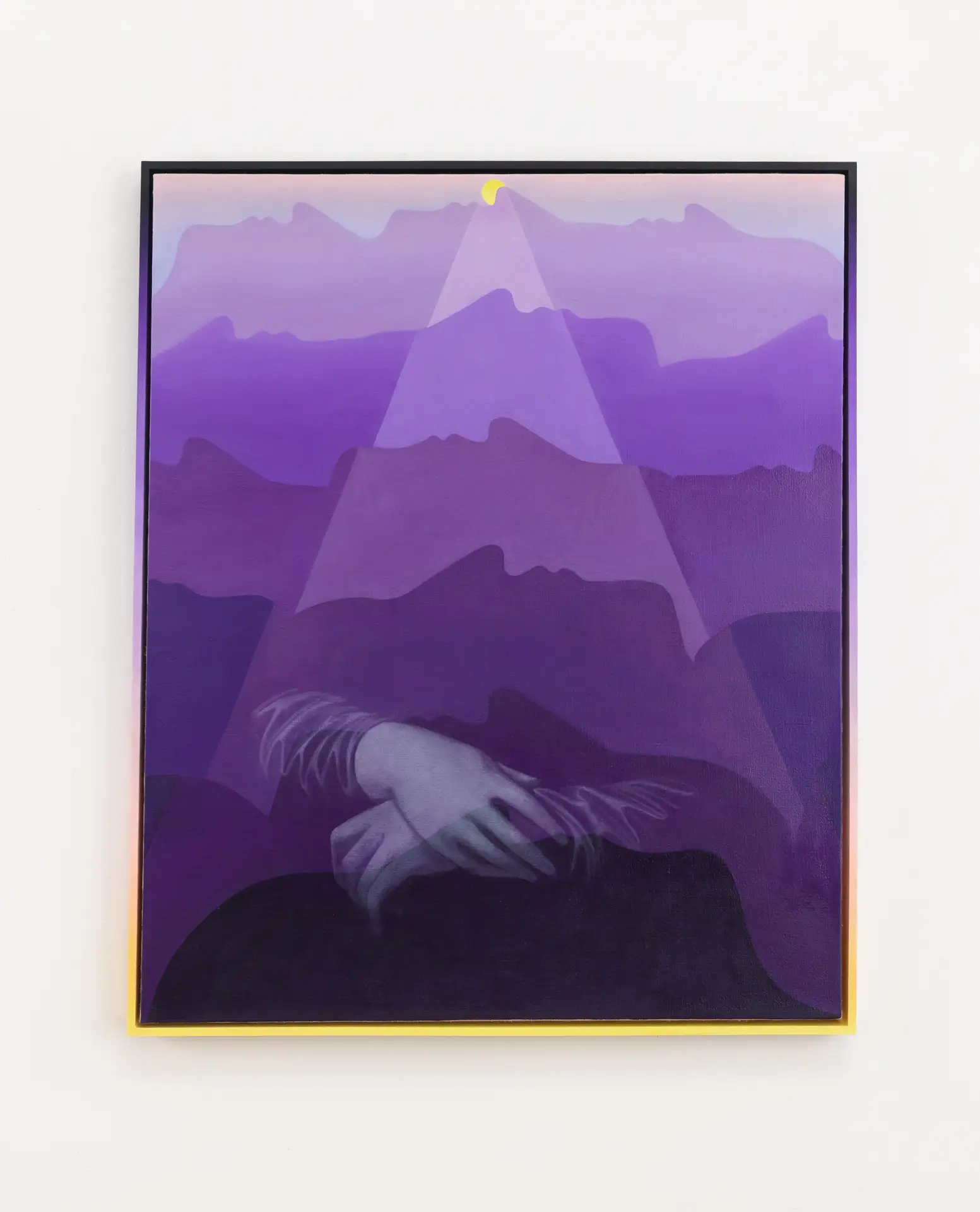
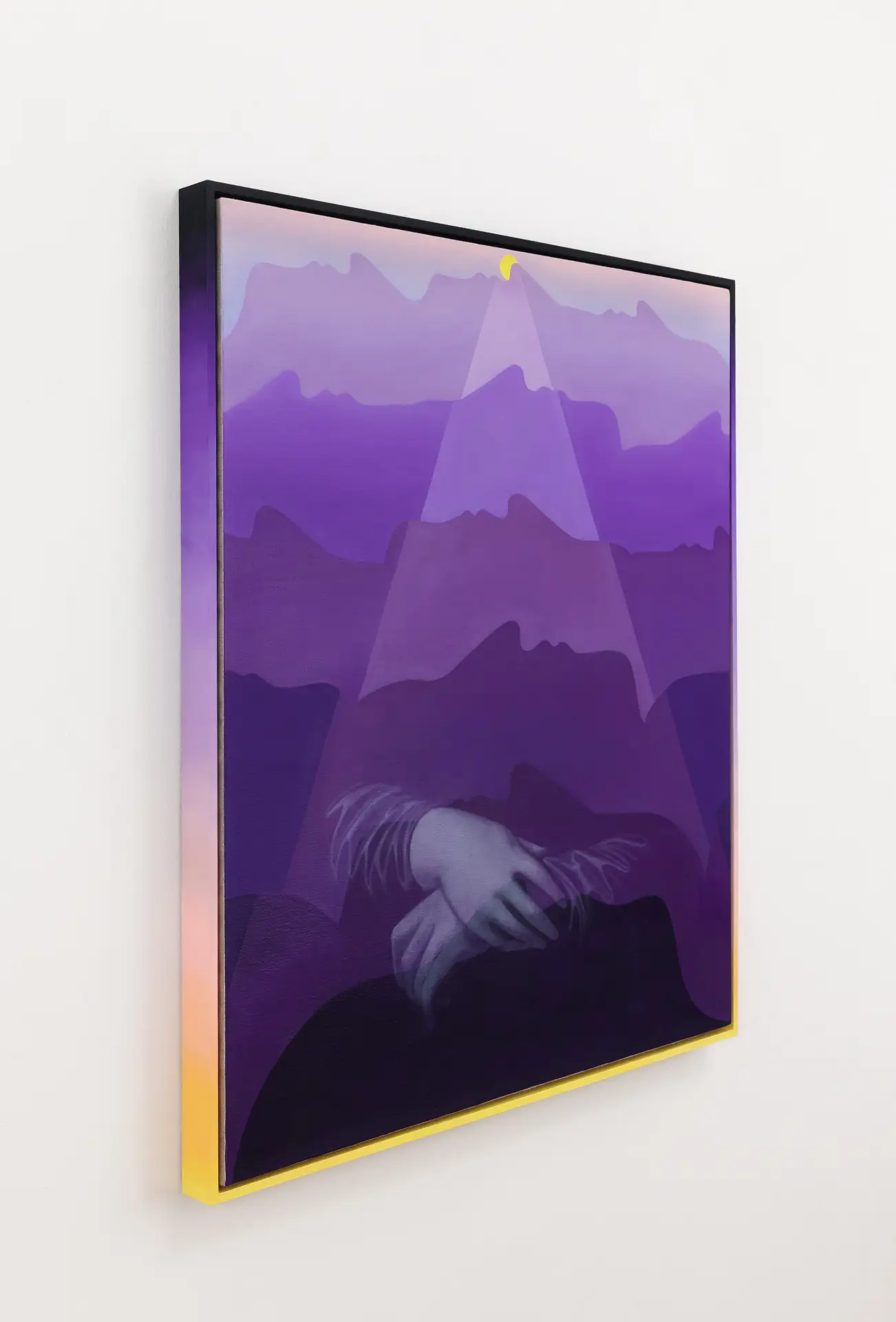



JD: Another art historical link—albeit indirectly—can be found in your use of curtains, which is reminiscent of the non-painterly curtains of René Magritte’s (1898-1967) surreal compositions. I also noticed an old post on your Instagram feed paying tribute to a wonderful Helen Lundeberg (1908-1999) painting titled The Veil (1947). What do the curtain and surrealism, in general, mean within your artistic practice?
EW: The curtain is so loaded because it signifies drama and something yet to be revealed. It also seems at home in the context of a painting, as it reinforces a space of suspended disbelief, like in the theater. I love how Magritte and Lundeberg almost create linear narratives, but not quite, resulting in something like visual non-sequiturs. I find their form of surrealism to be less hallucinatory and, therefore, more uncanny than other artists associated with the movement, such as Salvator Dalí, Max Ernst, and Leonora Carrington.
JD: Compositionally, you often work with symmetry and repetition to achieve a harmonious picture. In what way does this aesthetically pleasing framework function as a stepping stone for, for instance, introspection?
EW: I think the symmetry can be traced back to the paintings I was making in graduate school back in 2011. I was painting landscapes that were doubled from a centerline, like Rorschach inkblot tests. They look very different from the landscapes I’m making now, but the format and the ideas—about objective versus subjective imagery—were latent. Symmetry lends itself to a paradoxical way of seeing something, like the famous Rubin’s vase that can be seen as either two faces or a vase, but not both at once.
JD: Your work is often described as a revisitation of the art canon through a Jungian and feminist lens—which I blatantly used to introduce you in the introductory paragraph for this conversation. Could you please expand on both lenses and how these perspectives manifest themselves in your work?
EW: I find that the Jungian lens levels the playing field between high and low in the art canon. This was especially helpful for me because in the early 2000s, my art history education was still colored with a “painting is dead” post-Abstract Expressionism mentality. Luckily, there was an even stronger, overall hardcore, feminist perspective at Barnard College. This lens is concertedly less focused on “progress” as a straight arrow or conquests of one movement or artist over another. For me, the feminist perspective refutes a teleological or textbook model of art history and implies opportunities over impossibilities.
JD: Thank you for your time, thoughtful answers, and especially your irresistible work.
EW: Thank you for the thoughtful questions and the opportunity to speak with you!
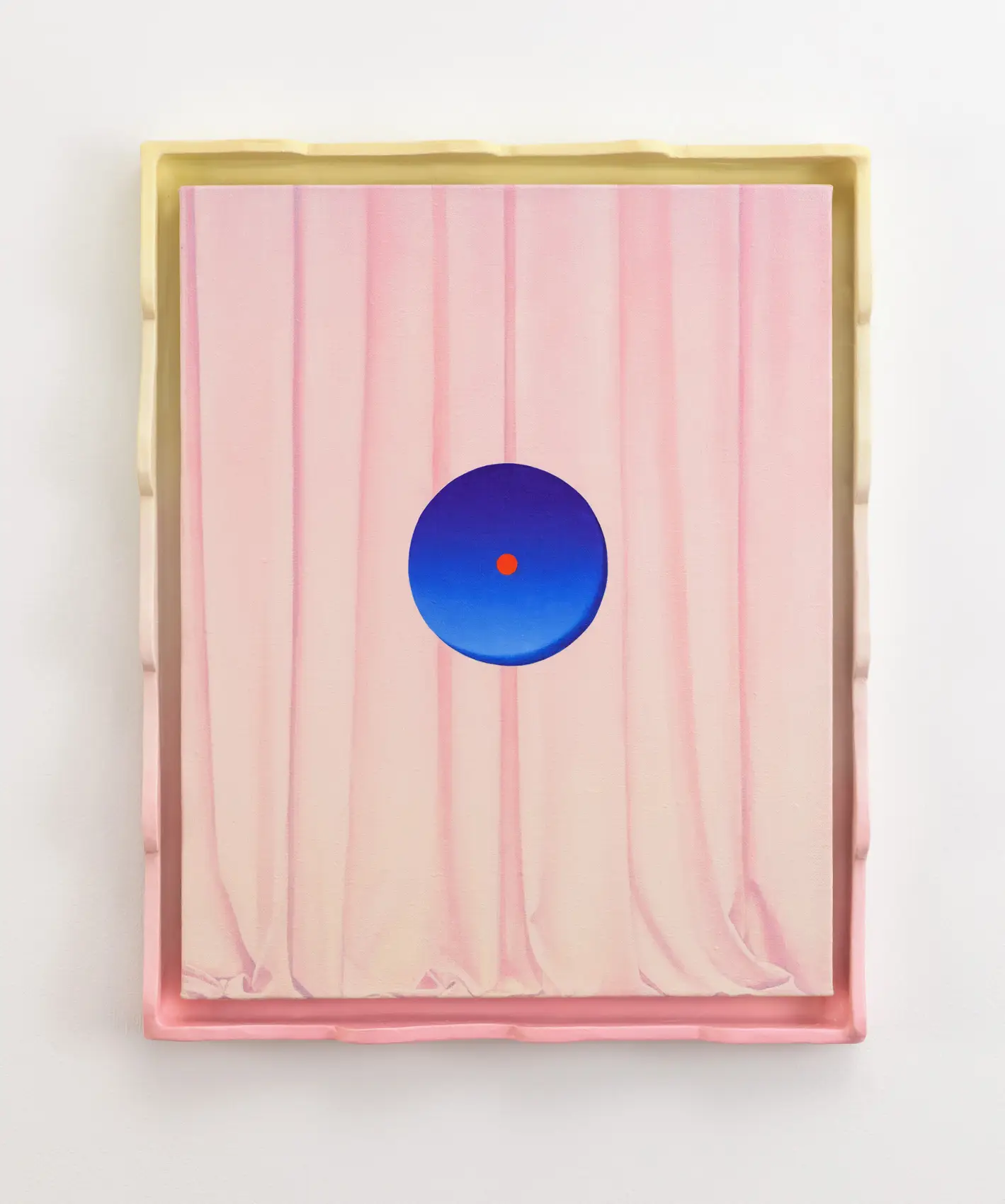
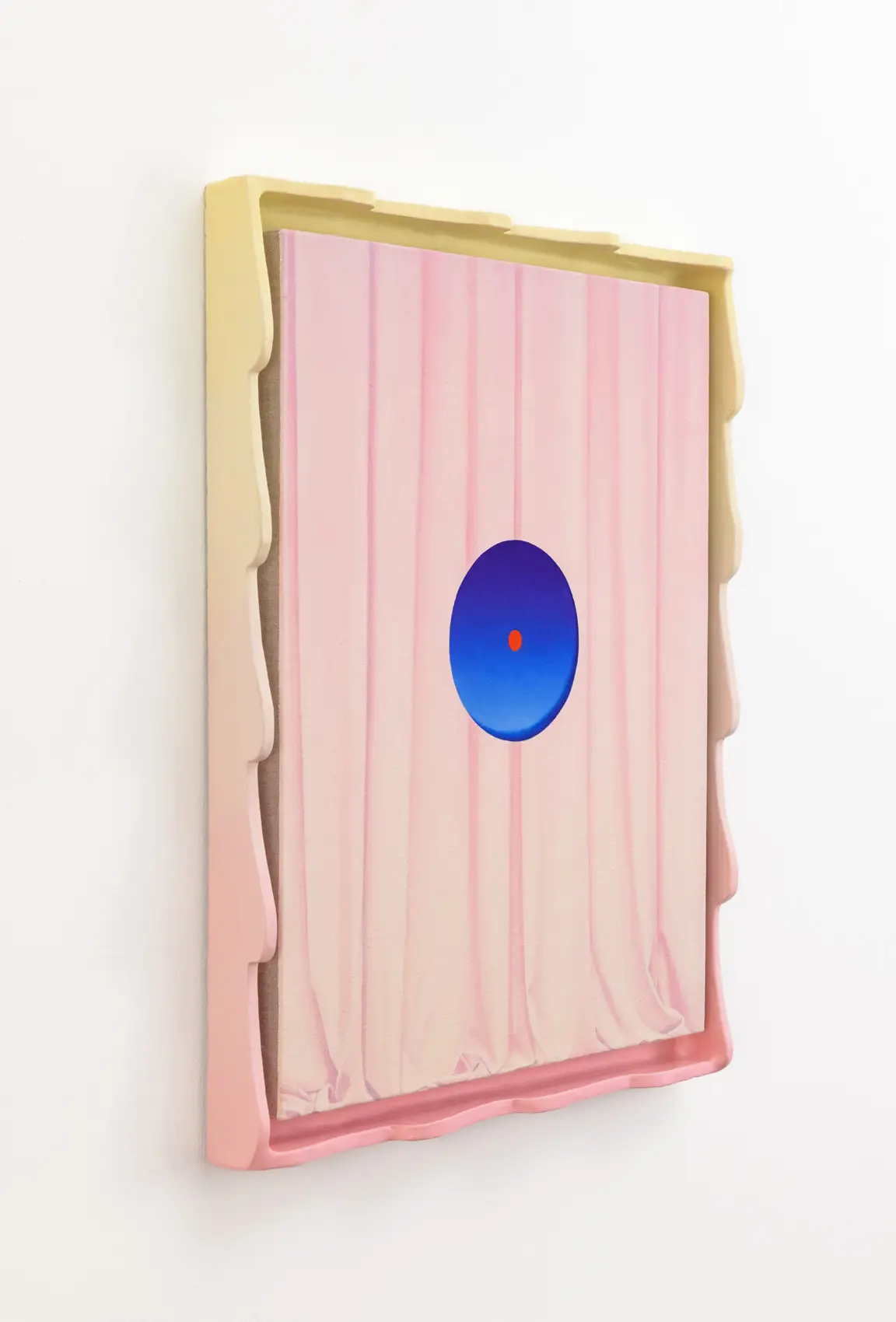
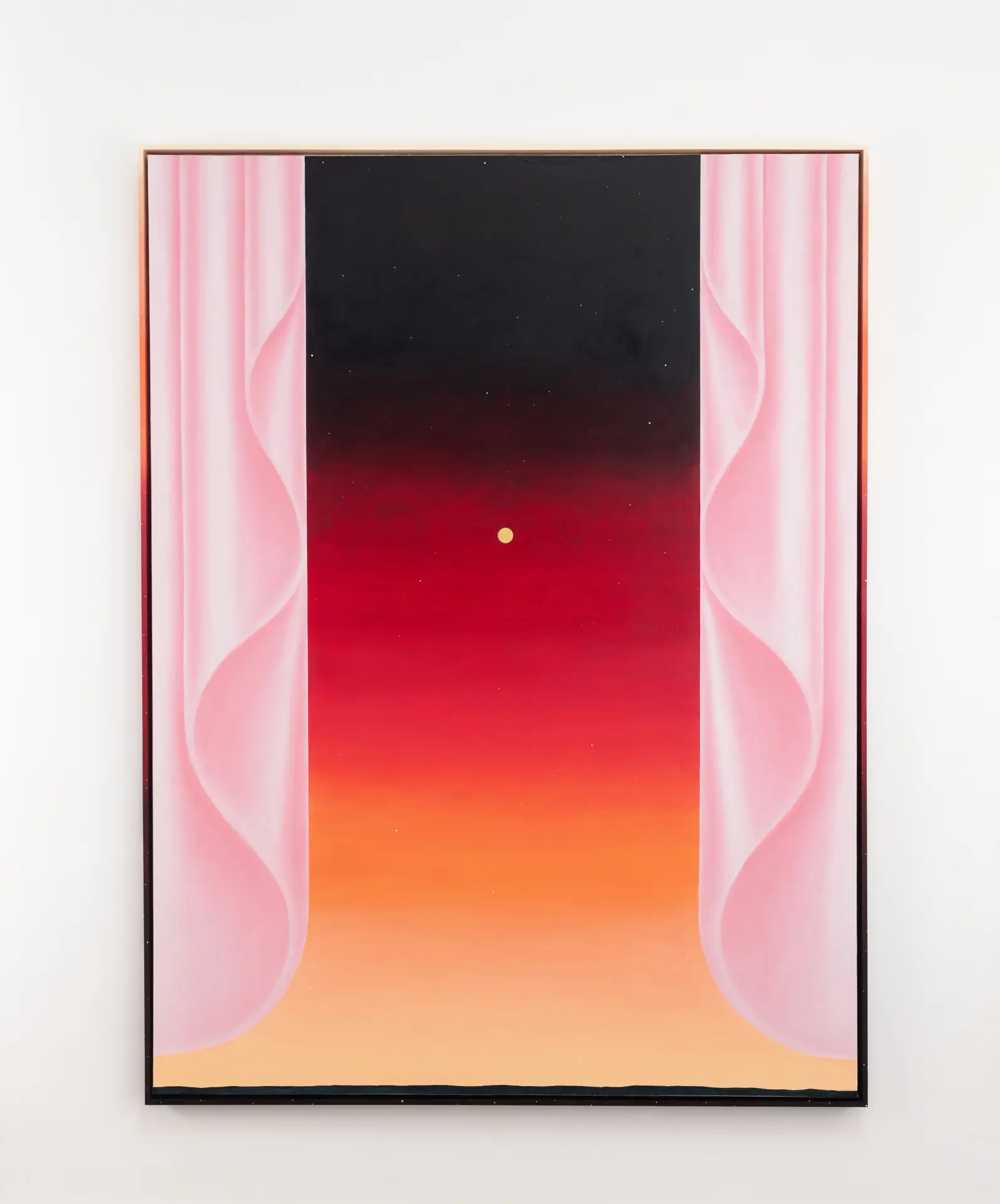
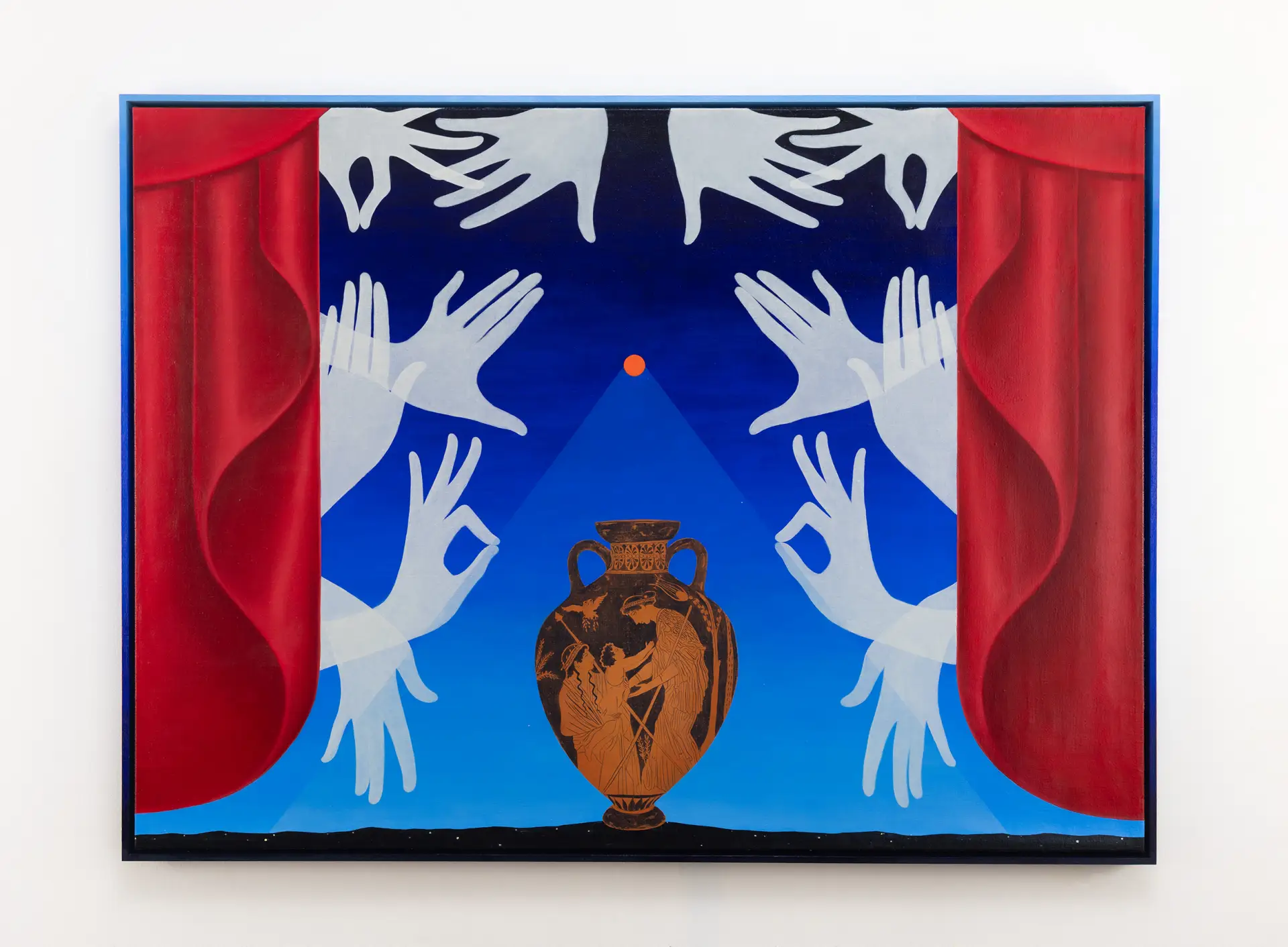
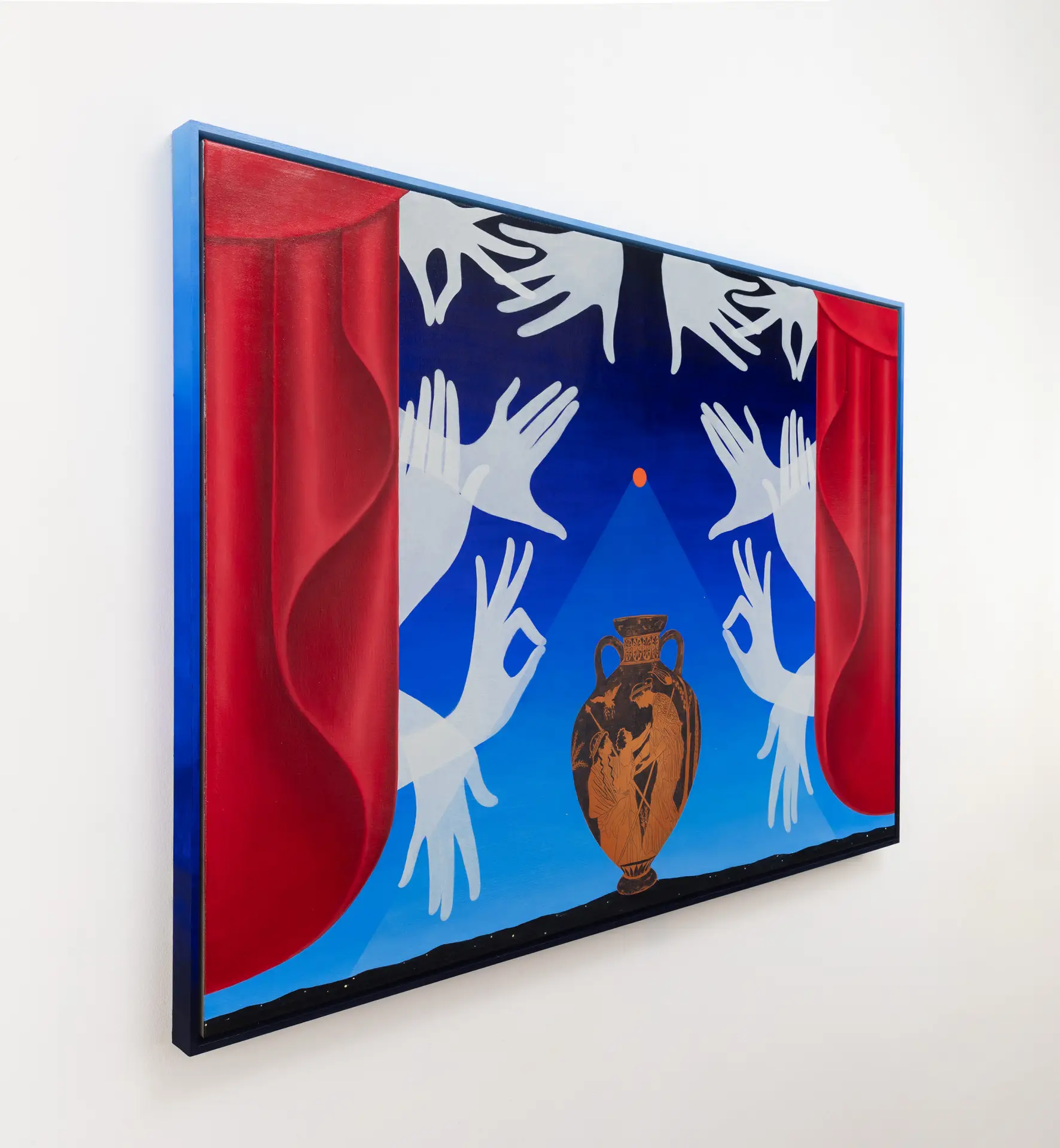


Cover image: Studio portrait of Emily Weiner, Nashville, Tennessee, US. Photo: Jessie Watts ©
Last Updated on April 16, 2025
About the author:
- Tags: HOME


